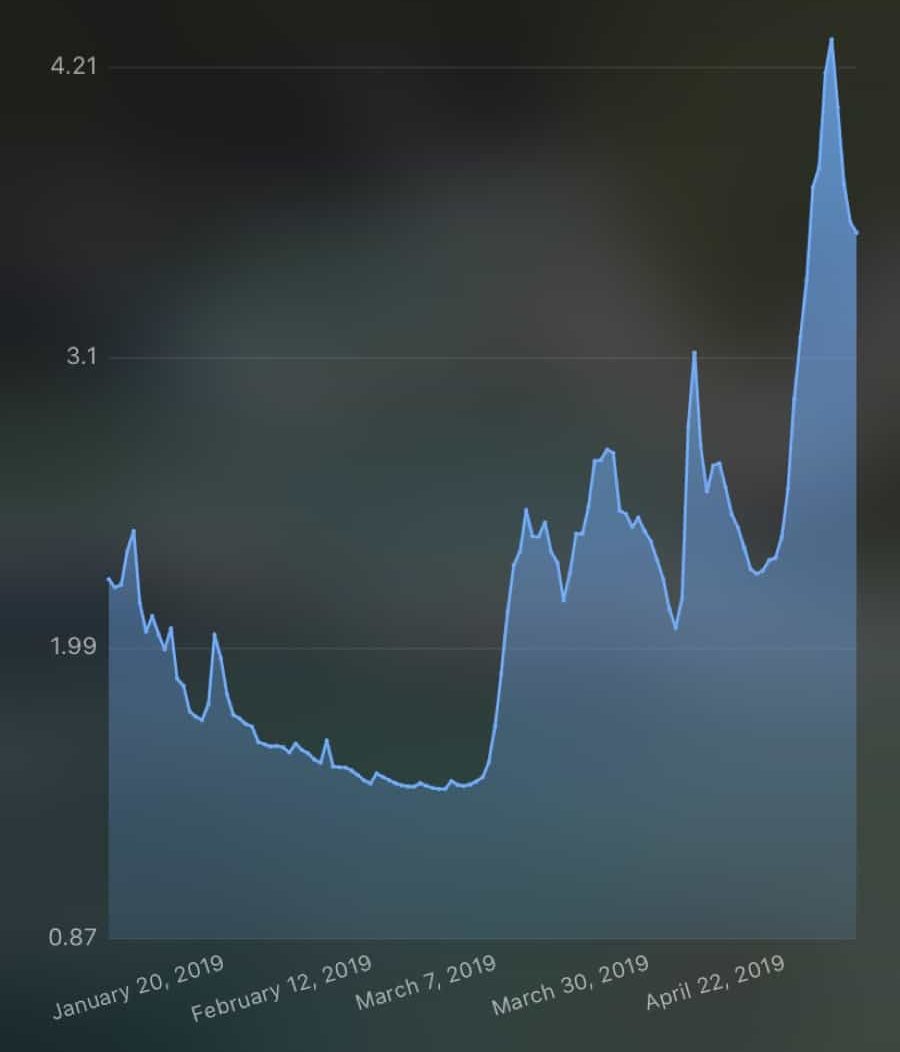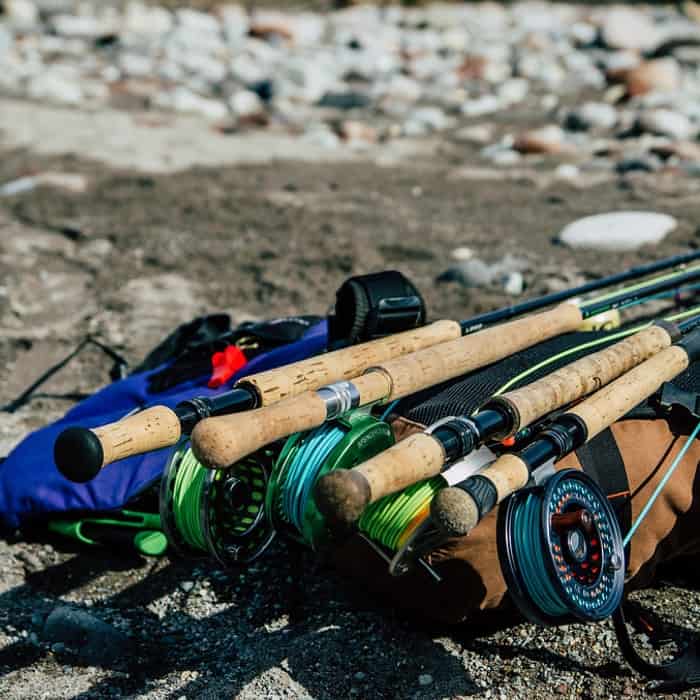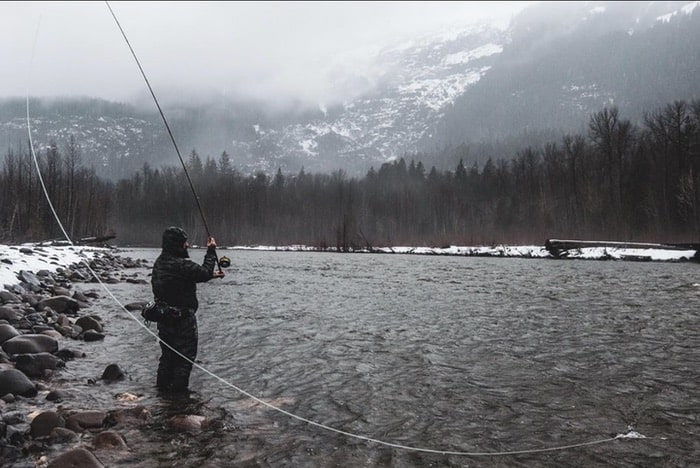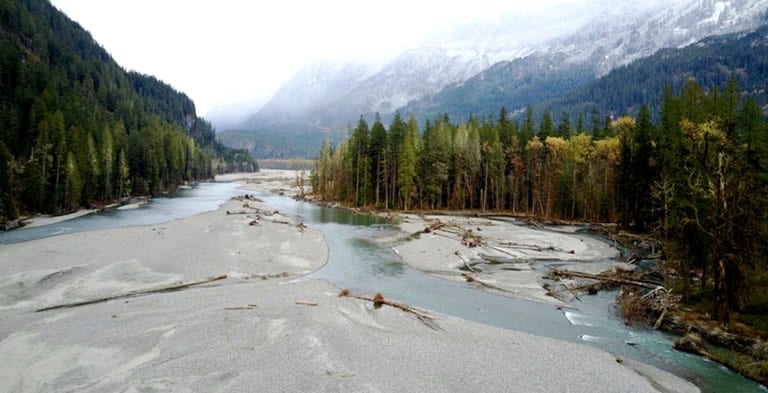05 Mar Squamish River Steelhead Fishing
SQUAMISH STEELHEAD
STEELHEAD FISHING THE SQUAMISH RIVER
The blog post is all about Squamish River steelhead fishing! Surrounded by the snowcapped peaks of the Tantulus Mountain Range the Squamish River flows from Pemberton Icecaps into the salted waters of Howe Sound. Beginning in February a very special run winter steelhead enter the Squamish River. Initially the numbers of steelhead are a trickle, but as the season moves into March and April that number grows. We offer a variety of guided Squamish River steelhead trips in the late Winter and Spring months. Below you’ll find information on Squamish River fishing for steelhead.
As you read through please keep in mind this is a relatively small run of fish, that deserve all of our respect. Conservation and education is a huge part of our guided fly fishing program and we hope this article encourages an increased appreciation and mindfulness for these fish.
![]()
TIMING YOUR TRIP
PRIME SPRING WEEKS
If you’re looking for the best time for steelhead fishing on the Squamish River system you’ll want to aim from mid February to late April. The first few fish are usually seen in the system by mid February. March and April are generally prime months for fishing the Squamish River. By mid March daily temperatures are starting to warm, this melts low laying snow and gives the river a rise in height and also some colour. The influx of fresh snow melt will often entice steelhead that may be milling in Howe Sound to enter the system.
By April the majority of the fish are in the system. Some have moved from the lower section into the upper reaches of the Squamish Valley, while others have made headway up the Cheakamus River. April is generally the best month for steelhead fishing in Squamish BC.
Early May can be a fabulous time for a trip, granted river conditions are stable. As daily temperatures warm and the freezing levels rise in May, accumulated snow begins to melt. The Squamish River drains about 3300 square kilometres, that’s a lot of snow, and river levels rise quickly as the snow pact melts. This is called the Spring freshet, or quick melting of snow causing flood like situations on drainage rivers. Low freezing levels and a gradual snow melt is the optimal scenario for May Squamish River steelhead fishing. The river will be an emerald green and we’ll see some of our best fishing of the season for Spring steelies and resident bull trout.
Below you’ll see a graph of the Squamish River levels from 2019. This will give you an idea of how intense the river levels can increase in early May. That said, we have over the years enjoyed fishable river levels well into the third week of May. If the Squamish River is too high to fish in May, then the Cheakamus River is usually a better option, as it is dam controlled and usually has lower flow levels in May. Optimal Squamish River fishing level is between 1.7 and 3.1 metres. You can follow this Squamish River level link to see the real time hydrometric graph of the Squamish.

WHAT GEAR DO YOU NEED?
If you’re booking a guided fly fishing trip with us then we provide all the gear. If you’re simply curious about the best Squamish River fly fishing gear to use for steelhead fishing here is a breakdown of what we use. Keep in mind we are a fly fishing operation, so this is a list of fly gear.
FLY RODS FOR STEELHEAD
Most anglers in the Pacific Northwest who are on the steelhead search are fishing with two-handed or Spey rods. Spey rods give you a distinct advantage when steelhead fishing in British Columbia. They’ll give you the ability to throw heavier sink tips and weighted fly further distances. Furthermore they allow you to fish river sections that would be too cumbersome for a single handed fly rod. A faster action 11.5 foot to 13.5 foot Spey rod will serve you well. Spey rods that can handle a 400+ grain line are optimal. A faster action rod allows for easier casting in wind and will mover flies and lines around with greater ease. If you are a single handed fly angler you’ll want to have a 8-9 weight fly rod. Again, a faster action rod at least 9 feet in length.

 BEST FLY LINES TO USE FOR STEELHEAD FISHING
BEST FLY LINES TO USE FOR STEELHEAD FISHING
Fly lines are a personal preference but we hope we can help you out by letting you know what we use. For our Spey rods we are generally outfitting them with Rio’s Skagit Max line, also known as a ‘shooting head’. We find this series of Skagit lines works very well on rods 12 feet or longer. For shorter rods you’ll want a shorter Skagit head. Skagit heads allow for easy casting of heavy sink tips and weighted flies. Many Spey rods will suggest a grain weight of Skagit line that is best suited to the rod. A 500 – 600 grain Skagit line will cast nicely on most 7-9 weight Spey rods.
Running lines, also known as slick shooters, are another personal preference. We’ve found the OPST 4o pound Lazer Line to be an excellent running line. Soft and supple, it casts well and has limited memory. Memory is when lines coil from sitting on the reel. This can make for frustrating casting and usually impedes your cast length.
Still using a single handed rod? Make sure you have a weight forward 8-9 weight fly line. Rio’s Big Nasty series works well when the wind is howling and the flies are big. Don’t be scared to up your fly line by a weight. If you have an 8 weight fly rod, it will happily handle a 9 weight line. Many of our guide rods are set up like this, it makes casting easier for beginners and turns over bigger flies and heavier sink tips more efficiently.
 TIPS & TIPPETS FOR STEELHEAD FISHING
TIPS & TIPPETS FOR STEELHEAD FISHING
Now it’s time to get your fly down to where those wild BC steelhead can see it. Rarely are we using anything besides Rio’s MOW and iMOW tips. These tips are made specifically for Skagit lines and Spey casting. There are easy to use loop-to-loop connections on all of them and they come in a variety of sink rates. A personal favourite for Squamish River fly fishing is the 5/5 T-11. No idea what that means? You’re not alone! That means that 5 feet of the MOW tip floats and 5 feet of the MOW tip sinks. The sink rating is T-11. MOW tips come in T-8, T-11, T-14 and T-17. The number (8, 11, 14 & 17) refer to the grain weight per inch. Easy way to remember it is low numbers sink slow. Height numbers sink fast. On low water conditions a 5/5 T-8 with a slightly weighted fly is nice. Don’t go heavy when fly fishing for Squamish River steelhead, most of these fish are living in 2-3 feet of water. Running a heavy tip and big heavy flies will have you finding more bottom than fish!
Don’t overthink things when it comes to choosing a tippet or leader. And don’t waste money on taper leaders for steelhead fishing. These fish are rarely leader shy. The most popular tippet is a 12-15 pound Maxima UltraGreen. You’ll only need a 3.5-5 foot section of this for your leader. When early season river conditions are low and clear going to a fluorocarbon option is advised, again in the 12-15 pound class. A stiff butt section of 20-30 pound line can be added to turn your flies over more efficiently.
 BEST SQUAMISH RIVER STEELHEAD FLIES
BEST SQUAMISH RIVER STEELHEAD FLIES
Ah the age old question! What is the best fly for catching steelhead? We have our favourites and like the Colonel we’re not about to give away any of our secret recipes. That said, fly choice isn’t terribly important. Steelhead are not feeding in the river, they’re smashing flies out of aggression. Bright coloured pink and orange flies are a favourite. Make sure you have some weighted versions to get down and some unweighted versions for fishing shallower section of the river. Find a fly that swims well, that’s key. Flies tied sparsely with quality materials will always catch more fish than overdressed flies tied with cheap materials.
As a side note I always tell clients it is infinitely more important to fish the fly well. Fishing the fly properly, mending your line and covering water is the key to Spring steelhead fishing. There is no secret fly or pattern, it comes down to presentation 99.9% of the time. Remember that all hook barbs must be pinched (single barbless fly only).
GENERAL STEELHEAD FISHING TIPS
FOR WINTER STEELHEAD
Steelhead are described the fish of a 1000 casts. On the Squamish River north of Vancouver you can times that by about 5. There’s aren’t huge numbers of fish in the system and the ones that are there generally live in funky spots.
Squamish River steelhead are often caught in shallow faster moving water. Don’t dismiss fishing tail outs of run and fast moving shallow riffles. Fish find protection in this type of water and expend little energy through their sleek design. Steelhead fishing on the Cheakamus River can focus on swinging flies in faster water with heavier sink tips and weighted flies.
Covering water is key, with all steelhead fishing in British Columbia expect to put the miles on. Starting at the top of runs and working your way through is the most effective method. Casting out to a just downstream of you, putting a mend in your line and drifting your fly through. One tip we tell our clients is fish the fly as far to the bank as possible. Very often fish are sitting much closer to shore than you’d think. Fishing “the Hang” means fishing your fly so it’s almost directly downstream from you. This is an important concept when it comes to steelhead fishing in BC. Picking up your fly to early could lead to missed opportunities.

CHECKING YOUR GEAR
CAN LEAD TO SUCCESS
Ensuring all your gear is in good working order is a no-brainer. You don’t want to put all that work in and then get your chance and have your fishing gear fail you. As they say the chain is only as strong as your weakest link. Check your leader and fly regularly. When I’m guiding I will check a client’s gear at the start of everyone and at least once as they fish through. A small wind knot in your leader or a compromised hook point can spell the difference between success and failure when steelhead fishing.
Check your connections from your sink tip to you leader and run your finger down the leader to check for abrasions or knots. A knot creates a weak link in your leader and will break on a heavy steelhead take. Flies often get beat up when casting, they can come off if you hit the rocks behind you or come unraveled after long use. If you’ve got your fly stuck on bottom several times give it a check. A blunted hook point won’t penetrate a hard fish lip if you get a grab.
SQUAMISH FISHING GUIDES
ABOUT OUR FLY FISHING GUIDE SERVICE
Lastly, if you are looking for a guided experience on the Squamish River we run a 12 month a year fly fishing guide operation from Vancouver, Squamish and Whistler. With over 20 years guiding experience we’ve become the Sea to Sky region’s trusted fly fishing guide service. We can pick you up in either Vancouver or Whistler or meet you in Squamish. We offer both walk and wade guided fly fishing and guided drift trips. Our guide staff specializes in two handed Spey casting, steelhead fishing and bull trout fishing, so you get the best possible day of Squamish River fly fishing. For more info email us chromersportfishing@gmail.com or call toll-free 1-877-902-3393.
Follow the links to learn more about our Squamish fly fishing guide service and our Whistler fly fishing guide service. Thanks for the read, hope you’ve learned something about our favourite fishery, see you on the water.

![]()
About the Author
Yos Gladstone is the owner operator of Chromer Sport Fishing, a guiding company and booking agency based in British Columbia, Canada. A full-time salmon & steelhead guide, Yos spends 200+ days a year on the water fishing, guiding and hosting trips.